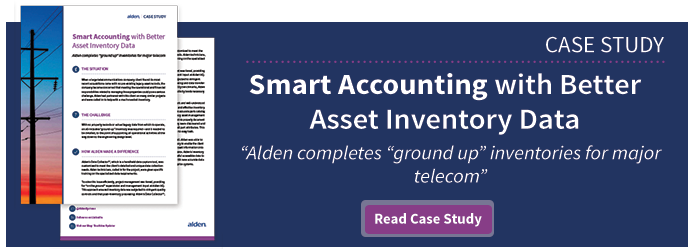Inventory Basics: Five Tips to Get You Started
 With warehouses of assets spread over miles of territory, hidden in trucks, closets and buildings in various states of organization, the prospect of completing a thorough inventory of all assets your business owns may feel like a daunting task. As with all complex, yet vital undertakings, starting small and working one step at a time can help turn a mountain into a manageable molehill.
With warehouses of assets spread over miles of territory, hidden in trucks, closets and buildings in various states of organization, the prospect of completing a thorough inventory of all assets your business owns may feel like a daunting task. As with all complex, yet vital undertakings, starting small and working one step at a time can help turn a mountain into a manageable molehill.
To help get the ball rolling, we present five simple inventory basics that any business can accomplish, one at a time:
1. Set an inventory schedule.
Inventories get better, more accurate, and easier if they are conducted with regularity. A first inventory, where unknown assets elude categorization and broken or outdated equipment is taking up space, will be difficult. Starting from scratch because the last inventory was years ago is no fun for anyone. Resolve to repeat inventories as often as your business allows or needs, and each one will be less revolutionary than the last.
2. Keep great asset records.
Once an inventory has been conducted, it is imperative the information collected be cataloged, archived and made accessible to everyone in the company who can use it to take action. Be sure to keep an up-to-date asset catalog with all the right information handy, including item descriptions and valuations, if necessary. The use of a robust inventory management software system is invaluable in this pursuit, further enhancing efficiency and reducing headaches down the road.
3. Tag all your assets.
Tagging and labeling is where the rubber really hits the road in inventory management. Barcoding or labeling each item and then using a scanner to capture every piece can make inventories a simple point, click, capture and catalog endeavor with much less hassle than manual recording of items.
4. Utilize an asset database.
Barcoded information can easily be loaded into an interactive inventory management system, further streamlining the process and making all assets searchable, and imminently usable..
5. Label asset shelves & frames, too.
Another important piece of the inventory puzzle is making the places where assets are located easily identified. Numbering and labeling all the shelves and frames in your storage facilities is just as important as barcoding individual assets themselves. Knowing that you have ten of a specific asset but not where they are located is obviously less than helpful.

Comments